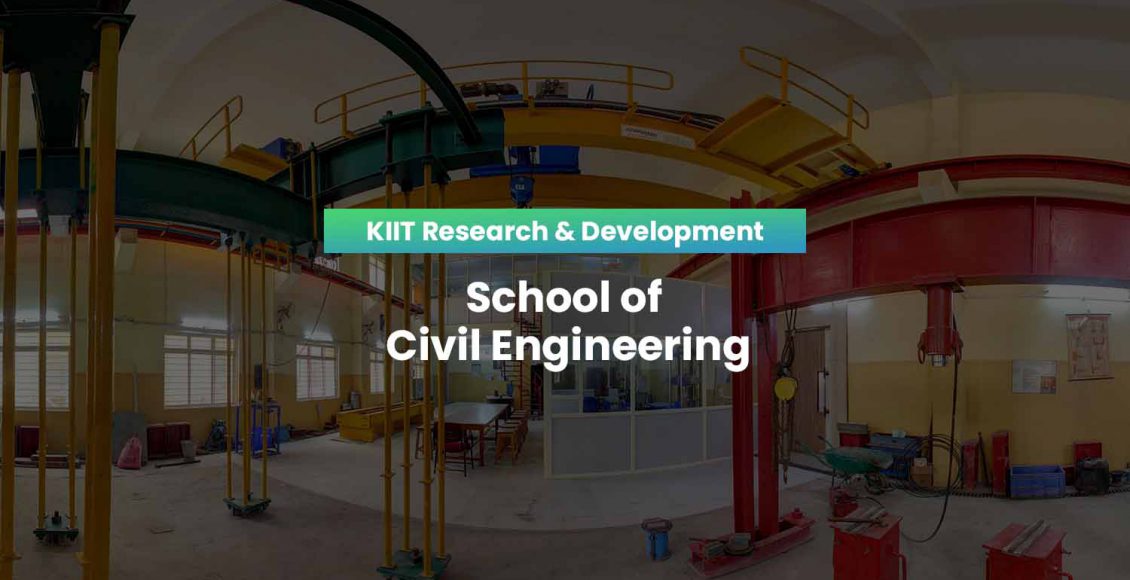School of Civil Engineering (Aug – Sep 2022)
Journal Paper
Teshnizi, E.S., O’Kelly, B.C., Karimiazar, J., Moosazadeh, S., Arjmandzadeh, R. & Pani, A. (2022). Effects of cement kiln dust on physicochemical and geomechanical properties of loess soil, Semnan Province, Iran. Arabian Journal of Geosciences, 15(18), 1482.
Abstract
For problematic soils, conventional (cement and lime) additives can provide the necessary improvements in geomechanical properties for various infrastructure constructions. However, these additives have a high environmental impact and they are not always cost-effective, such that potential alternative additives (e.g. obtained as industrial by-products) require investigation. This paper examines cement kiln dust (CKD), obtained as a by-product of cement clinker manufacturing, for improving the geomechanical properties of an Iranian loess soil (sandy silt). Compaction, unconfined compressive strength (UCS), direct shear (DS) strength and soaking durability tests were performed on the loess soil and its mixtures with 5–20% CKD, investigating the effect of curing period (of up to 28 days) on the mobilised strength. Observations from mineralogical and microstructural examinations are also presented in this paper. Compared to the unamended loess, the strength and elastic modulus substantially increased for increasing CKD content and curing period. Improved strength and durability (under soaking) of the soil–CKD mixtures is explained by particle aggregation (of the loess soil), inclusion of the fine CKD material and the action of calcium-derived gel (linking) products. Hence, as well as reducing the disposal problem (of the CKD by product) in the cement industry, the use of this material, as additive for soil stabilisation applications, would provide an effective and sustainable option for improving the geomechanical properties, as demonstrated for the investigated loess soil.
Patent Granted:
Name of the inventors: Dr. Sumit Sagar Hota, Dr. Sudhansu Sekhar Sahoo, Dr. Shanta Chakrabarty, Dr. Deba Prakash Satpathy, Dr. Dillip Kumar Bera, Dr. Auroshis Rout & Dr. Sarat Kumar Panda
Title of the Patent: Earthquake Resistant and Energy Efficient Composite Brick and Method of Preparation Thereof (Indian patent)
Abstract
The invention discloses a MU seven-point five-level ceramsite composite self-insulation brick, belonging to the field of preparation of composite insulation bricks, wherein the dry apparent density of a finished product composite insulation brick main body is lower than 720kg-800kg/m3The heat conductivity coefficient is 0.2w/m.k, the heat preservation and energy saving requirements of 65 percent can be met without adopting external wall heat preservation, the average strength value in 28 days is more than 7.5-8mpa, other various requirements meet or are better than the requirements of the JG/T407-2013 self-insulation concrete composite building block, an interface agent, special mortar and high-strength light ceramsite are not used in the manufacturing process of the composite heat preservation building block main body, the concrete mixing ratio of the building block main body is optimized by adding a high-efficiency water reducing agent, the process equipment is improved, and the strict control is carried outThe MU7.5 ceramsite composite thermal insulation block meets the requirements of environmental protection and building energy conservation on building materials, and has better thermal insulation, impermeability, frost resistance, light weight and sound insulation compared with the existing brick.
Consultancy Services
| Investigators | Title of the Sanctioned Project | Name of Funding Agency | Year |
| Prof. Malaya Mohanty, Prof. Brundaban Beriha, Prof. Benu Gopal Mohapatra | Traffic impact assessment for residential apartment project over Plot No.309/1694, Nandan Kanan road, Patia, Bhubaneswar | Paltronics Allied Industries Pvt. Ltd. | 2022-23 |
| Prof. Narayan Chandra Moharana, Prof. Tribikram Mohanty, Prof. Asish Kuamr Pani, Prof. Kirti Kanta Sahoo | Material Testing (Steel) | NCCBM/NBCC | 2022-23 |
| Prof. Satyajeet Nanda | Material Testing (Soil) | NCCBM | 2022-23 |
| Prof. Benu Gopal Mohapatra, Prof. Brundaban Beriha, Prof. Satyajeet Nanda, Prof. Rana Chattaraj, Prof. Sanjib Moulick | Technical Support sought for review and recommendation of Tank Foundation for NRL Paradip Project | Indian Oil Tanking Limited (IOTL) | 2022-23 |
Ph.D. Degree Awarded
Student’s Name: Dr. Subodha Kumar Rautaray

Supervisor’s Name: Dr. Ashoke Kumar Rath and Dr. Dillip Kumar Bera, School of Civil Engineering
Thesis Title: Study of performance of self compacting geo-polymer concrete by using industrial waste in ambient curing
Abstract of the Thesis:
Besides of water, cement is the most widely utilised building material. The process of making ordinary Portland cement (OPC) is extremely harmful to the environment since it emits a significant amount of CO2. Alternative technologies for the production of cement or cement-like materials are becoming increasingly popular as the cement industry’s environmental problems worsen. SCGC (Self-Compacting Geo-Polymer Concrete) is a unique and superior method of concrete placement that does not require vibration and is made without the use of traditional Portland cement. In this work, M30 self-compacting geo-polymer concrete was created using class F type fly ash with partial substitution of ground granulated blast furnace slag (GGBFS) at 10, 20, 30, 40, and 50 percent. With a total pozzolanic content of 420 kg/m3, the mix had a fixed alkali solution to fly ash ratio of 0.45 by mass. The ratio of sodium silicate to sodium hydroxide solution was 2.5, with an additional 12 percent water. By altering the molarity of sodium hydroxide (NaOH) from 8 M to 14 M and Super Plasticizer (SP) from 2 percent to 8 percent, the current study is primarily focused on the fresh and compressive strength properties of SCGC. To evaluate the fresh qualities, test methods such as slump flow, L-box, and V-funnel were used. After 7, 28, and 56 days of curing under ambient conditions in the court yard, the compressive strength of SCGC was tested. The addition of GGBFS to the SCGC mixes aided in the development of considerable compressive strength over all curing durations in ambient conditions. According to studies, increasing the molarity of NaOH lowered the fresh characteristics of SCGC while increasing the compressive strength. The optimized value of molarity and SP were 12 and 6% respectively at 30% replacement of fly ash by GGBFS. The durability and the microstructure study of the specimens were also conducted. It is established from the durability study that, the sulfuric acid attack is the most hazardous among all the chemical attacks and SCGC exhibits better resistivity than SCC in all chemical exposures. Finally, a Pilot study in the field was conducted with M-30 concrete of both SCGC and SCC for comparison of their strength parameters at various ages of maturation.
Student’s Name: Dr. Jagannath Patel

Supervisor’s Name: Dr. Ashoke Kumar Rath and Dr. Dillip Kumar Bera, School of Civil Engineering
Thesis Title: Study of Performance of Pervious Geo-polymer Concrete using Industrial Waste in ambient curing
Abstract of the Thesis:
Every year, the demand for concrete is increasing. It is currently the world’s second most consumed substance, after water. As a result, the environmental challenges associated with the conventional concrete are rapidly expanding. The cement production emits a significant amount of greenhouse gases and consumes a huge amount of energy. Furthermore, as a result of increased urbanization, the earth’s surface is being covered with impermeable concrete due to current construction practices, resulting in a number of environmental challenges such as high storm water runoff, urban heat island, and so on. Impermeable islands and urban flooding are caused by the use of cement-based concrete pavement and other infrastructure with an impermeable and well compacted sub foundation sealed by concrete and related impervious drainage systems in and around towns and cities. As a result, storm water runoff is promptly collected and released to multiple receiving water bodies, bringing a higher amount of contaminants, reducing infiltration, and depleting the ground water table. To overcome these problems, pervious concrete is the alternative solution to be used in the parking areas, low volume road pavement, sidewalks, drive ways, tennis courts etc. in place of normal cement concrete. Normal porous concrete is a special type of concrete with high interconnected porosity, allowing water to flow easily through the pervious concrete and percolate into the sub-grade. On the other hand, one of the best alternatives of cement is alkali activated fly ash binder (geo-polymer) which is an environment-friendly construction material and also a cement-less concrete. Geo-polymer binders are a potential alternative construction material to OPC, as well as an opportunity to convert industrial waste like fly ash, slag, rice husk ash, silica fume, and so on, into valuable products that are now employed in a variety of applications. Geo-polymer is an inorganic polymer created by reacting alumino-silicate minerals with alkali activated liquid. The process of flexibility and low carbon footprint of geo-polymer binders has gained popularity due to its environmental benefits. In this research works an optimized mix proportion has been adopted which was based on the laboratory tests considering various parameters like NaOH concentration, Na2SiO3 to NaOH ratio by mass, fly ash to aggregate ratio, aggregate size, percentage replacement of GGBFS etc. on mechanical strength and hydrological property of pervious geo-polymer concrete. Pervious geo-polymer concrete shows higher strength than pervious cement concrete. In addition, pervious geo-polymer concrete also offers economic benefit over pervious cement concrete. Two pilot studies were conducted in two different sites basing on the optimized mix design results obtained from laboratory under; one under Rural Works Department, Cuttack, Odisha, India, i.e construction of pervious geo-polymer (PGC) road shoulder at Amanpada rural road and second one was in the approach road of 200 seated OBC hostel at Anugul under SC & ST development department, Govt of Odisha using pervious geo-polymer with ground granulated blast furnace slag (PGCS). The results of the PGC and PGCS tests at two different sites were compared to laboratory test results in this thesis.


